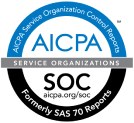The California Workers’ Compensation Institute (CWCI) published a new study that examines the effectiveness of functional restoration programs (FRPs).
FRPs are multi-disciplinary programs designed to help injured workers with chronic pain and improve function when other therapies are not working. These programs often involve teams of different specialists, using a combination of modalities to address pain.
CWCI analyzed 635 workers’ comp claims involving FRPs and compared them to over 270,000 non-FRP claims to identify differences in claim characteristics, geographic distribution, and clinical conditions. The study also reviewed how well the FRPs align with the Medical Treatment Utilization Schedule.
According to the report, only 42.8% of FRP claims had a chronic pain diagnosis, even though clinical guidelines recommend FRPs for these cases. As for costs, FRP claims cost an average of $234,003, approximately 59.3% more than non-FRP claims. Medical costs were twice as high, and indemnity costs and expenses were each 28% higher.
Outpatient costs were higher because one-third of the billing codes used for FRPs weren’t listed in the fee schedule. These unlisted codes made up 84.3% of total treatment costs. Furthermore, on average FRPs lasted eight weeks, longer than the recommended 4–6-weeks, and workers attended only 3.8 days per week, below the 5-day minimum.
These study findings highlight gaps between guideline recommendations and how FRPs are actually managed. The study also noted that FRPs usually started after 792 days of conventional treatment and had an average of only 37 physical medicine visits. Furthermore, FRP claims have a 94% attorney involvement rate, significantly higher than in other claims, which have a 50.8% attorney involvement rate. Furthermore, the FRP claims are concentrated in the Bay Area and Central Valley, unlike most indemnity claims found in Southern California.






